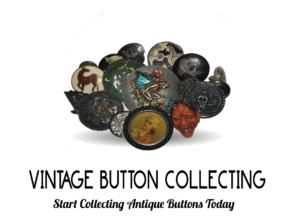
Antique Enamel Buttons: A Closer Look
Button collecting has grown steadily in popularity every year for decades. There are many different subsets of collectors. Some specialize in one type of button material, such as enamel buttons which we are going to discuss in more detail further on. Others are more interested in buttons of all materials from a specific point in history, such as the civil war. Whatever their passion, button collectors are becoming more interested in owning a little piece of history and tiny, beautiful works of art.
There are two specific types of enamel buttons that are in high demand for collectors. One is cloisonné enamel buttons. The other is champleve enamel buttons. Both types of enamel buttons have a similar finished appearance and were made using similar materials. However, the process to make each of these varieties of enamel buttons is slightly different, and these subtle difference affect both the market value of the enamel buttons as well as the care and restoration procedures.
Champleve enamel buttons are made using etched metal and enamel. A metal base, usually made of copper or bronze, but sometimes made of gold or silver in more expensive and rare champleve enamel buttons, has been hollowed out in places so that the base includes short “walls”, with the metal dividing the button into sections. From there, the enamel is placed into each of the sections and fired to create a colorful piece of jewelry with shiny “threading” throughout. The champleve technique is used in antique buttons, but also in other types of jewelry and decorative items such as spoons, jewelry boxes, and more.
Cloisonne enamel buttons have a similar style, in that they too are composed of enamel with metal “threading.” However, cloisonné enamel buttons were produced using a different technique. Rather than etching out the metal base to create hollows for the enamel, cloisonné enamel buttons begin with a flat metal base and then delicate wires are gently sautered to the base to create the walls and hollows. Once the sections are created, the enamel is then placed in the hollows and fired. Generally, all other things being equal, collectible or antique cloisonné enamel buttons will command a greater market value than champleve because the technique used to create them is more difficult.
Whatever type of enamel buttons you collect, or whether you collect both champleve and cloisonné there is no denying the delicate and intricate beauty of these pieces. If you are considering selling or restoring your antique enamel buttons, it is a good idea to consult with a professional restorer. Often times these items can be delicate because of their age, and the mix of metal and enamel can make them complicated to restore without the proper materials and expertise.












